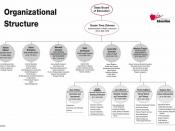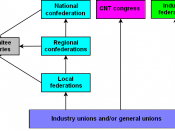Introduction
Why all the noise from senior management about improved communication? Organizations need communication, in all sorts of relationships. When organizations focus on the professional relationships, the managers wants to communicate to be able to increase his or her employees' knowledge. In this paper, I will describes and elaborate on two types of communication: lateral and vertical. Furthermore, I will also compare the two types of communication and how they relate to my organization.
Vertical Communication
Vertical communication can be described as the transfer of information, in the order from highest to the lowest, in an organizational structure, (Spillan, Mino, & Rowles, 2002). In my company, decisions are usually made at a divisional level and communicated vertically. The passing of information comes from the division, goes to the regional level, then to local management, and finally to staff. However, because of our organizational structure, each department is split at the regional level.
The individual departments consist of marketing, technical operations, human resources, customer service, and many more. Communicating vertically, from division to staff, includes the use of conference calls, electronic mail, faxes, and face-to-face meetings.
"Organizations that rely on vertical communication experience several problems, such as a heavier workload for top management, less tendency for effective listening to occur at upper organizational levels, more tendency for autocratic leadership, and isolation at various organizational levels," (Spillan, Mino, & Rowles, 2002). Effective listening, from upper and lower management, has created problems in my work environment. Furthermore, this is a problem because the majority of management's time is spent in meetings and not at their immediate work environment.
"The unity of command constrains the communication to specified vertical connections among management, departments, and staff," (Spillan, Mino, & Rowles, 2002). Individual departments, in my organization, have individual goals. Individual departmental goals have also created...


